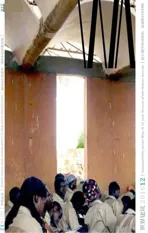改造旧乡村
2016-12-21
改造旧乡村
Revitalizing Old Villages
城市与乡村之间的对比,也许没有比在中国更明显的了。温饱型生存环境迫使农民从乡村涌入城市,耕地也被用于其他用途。然而,中国意识到了这种趋势持续下去会带来危害,会对社会的构成和将来的粮食安全造成威胁。关于北京市郊的试点城市规划设计,论证了需要做多少工作来让人留在乡村环境,以及能够为此做多少工作。
不管在哪种情况下,人们只要想到中国,就会被各种令人惊讶的数据和实际情况所震惊。过去30年,中国经济平均每年以10%增长。我们可以称中国为发展中国家,也可以称其为经济强国。
一项对中国北京周边郊区某村庄的乡村规划设计表明,遗产保护、传统知识、当地资源、现代技术和专业项目管理相结合具有一定程度的力量,而且如果考虑到中国农村产业的巨大规模,这种力量会变得更强大。
中国农民占全球公民的十分之一
沿海地区的经济发展最引人注目,拥有的人口为4亿。在这些地区,人们的生活水准快速提升,而且整体上超过了生活在中国内陆的其他9亿人。地区之间的差异更为明显,而城市与农村之间的差异尤其明显。中国社会科学院的一项研究表明,中国的农村与城市居民之间收入分配差距在全球最大。尤其我们考虑到全球公民的1/10为农民时,就会觉得这种对比特别明显。
人口大规模流动
温饱型农业在中国仍是常态——农民家庭的产出基本用来满足自身家庭的需要,最好的情况下也就出售1/4。也就是说,可支配收入很少,而且少有机会在机械化和其他农田改造上投资。作为密集发展中心的江河下游地区可能会有所不同——这里的农业受到国家扶持。就算如此,过去20年来,农村的实际收入急剧降低,因而人们逐渐决定离开土地,到沿海谋生。
城市有很多工作机会,尤其是建筑行业和服务行业——从而鼓励其他人加入大规模人口流动。据估计,从1982年到1990年,大约有两亿人从中国农村中心区域流动到城市。根据政府估计,到2010年,另外将有1.8亿农民加入流动大军。
疏导人口外流潮
那些加入农村人口外出大军的人,现在意识到在“新家”享受很少权益,也感觉到了如果要在城市定居会受到排挤。中国户口制度,像土地本身一样古老,认为居住地是唯一有效的家庭户口登记地。因此,城市外来人口只能享受有限的教育权益或政府服务。
这些年来,中国当局已经开展工作来改进户口制度,但是人口流动不可能减缓,除非农村的生存条件得以改善。因而中国实施一项计划来发展被长期忽略的地区,并制定了这样一个目标——政府承诺到2020年,农村居民的平均收入翻倍;现在,年收入水平为600美元左右。
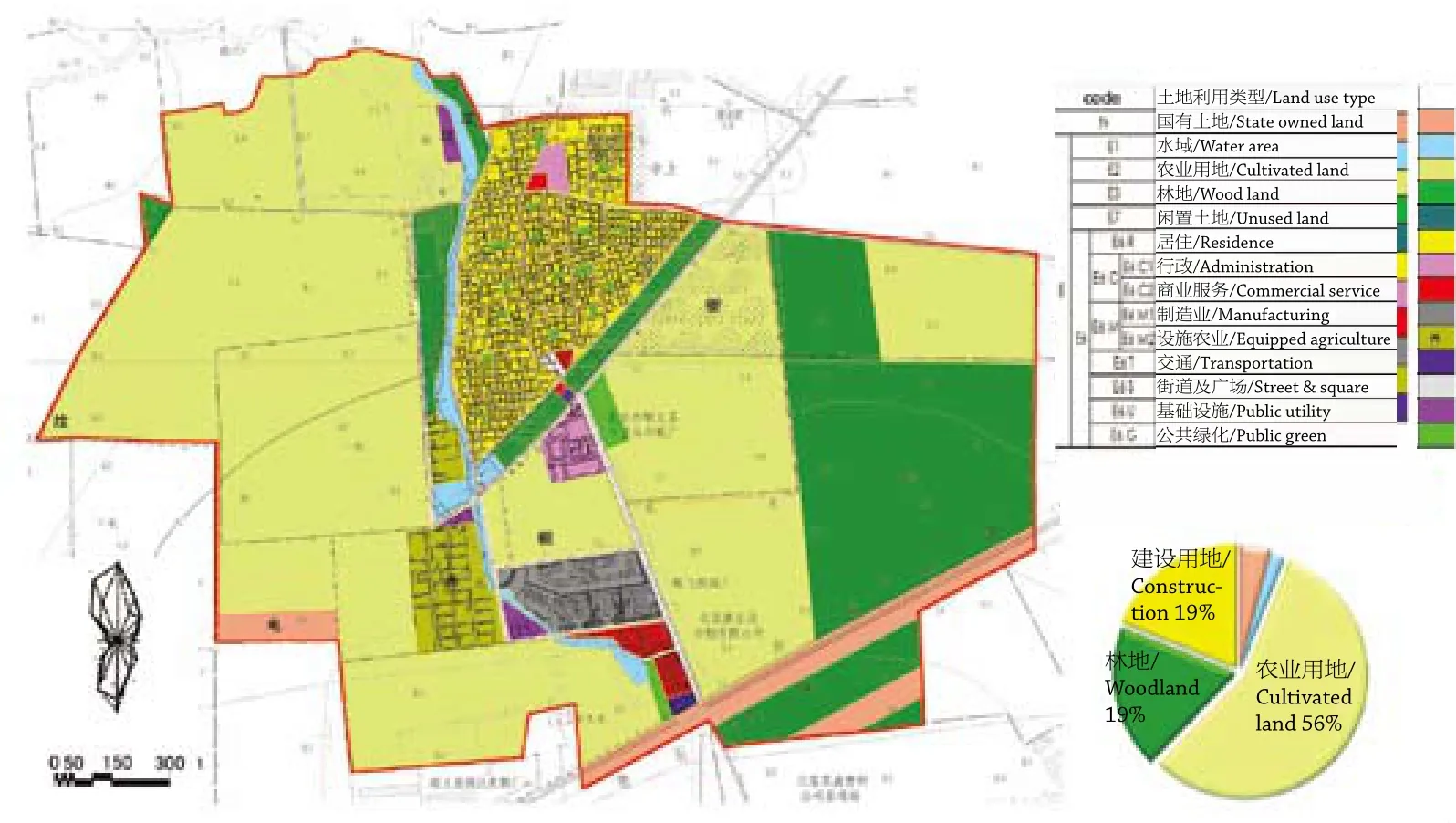
2 土地利用规划/Land use planning

3 社区的微扩散更新模式/Micro-spreading renewal model for the community

4 从废弃场地开始,社会肌理基本保持原有的物质模式/Start from abandoned sites, social fabric basically maitained in its original physical pattern
土地利用类型/Land use type国有土地/State owned land
水域/Water area
农业用地/Cultivated land
林地/Wood land
闲置土地/Unused land
居住/Residence
行政/Administration
商业服务/Commercial service制造业/Manufacturing
设施农业/Equipped agriculture交通/Transportation
街道及广场/Street & square
基础设施/Public utility
公共绿化/Public green建设用地/ Construction 19%
林地/
Woodland
19%农业用地/ Cultivated land 56%
农用地的急剧流失
在中国,土地改革是政府工作的重头戏。农用地被认为是当地行政市的集体财产——家庭从村委会租赁农用地,租期为30年。但是,农民从农村到城市的流动导致了许多租约被放弃——免费地块被集中起来出售用于其他用途。而且这导致了农用地的急剧流失——而农用地是中国将来食品安全所依赖的基础。
中国农业部采用的模型表明,国家需要1.2亿hm2
2农用地来满足自身需要。现在,仍有1.22亿hm2农用地用于农业生产,但统计表明,每年有20万hm2农用地流失,这需要警惕。尤其是近百万勉强靠这有限空间生活的农民。需要有一项综合解决方案来应对导致问题的原因和造成的影响。
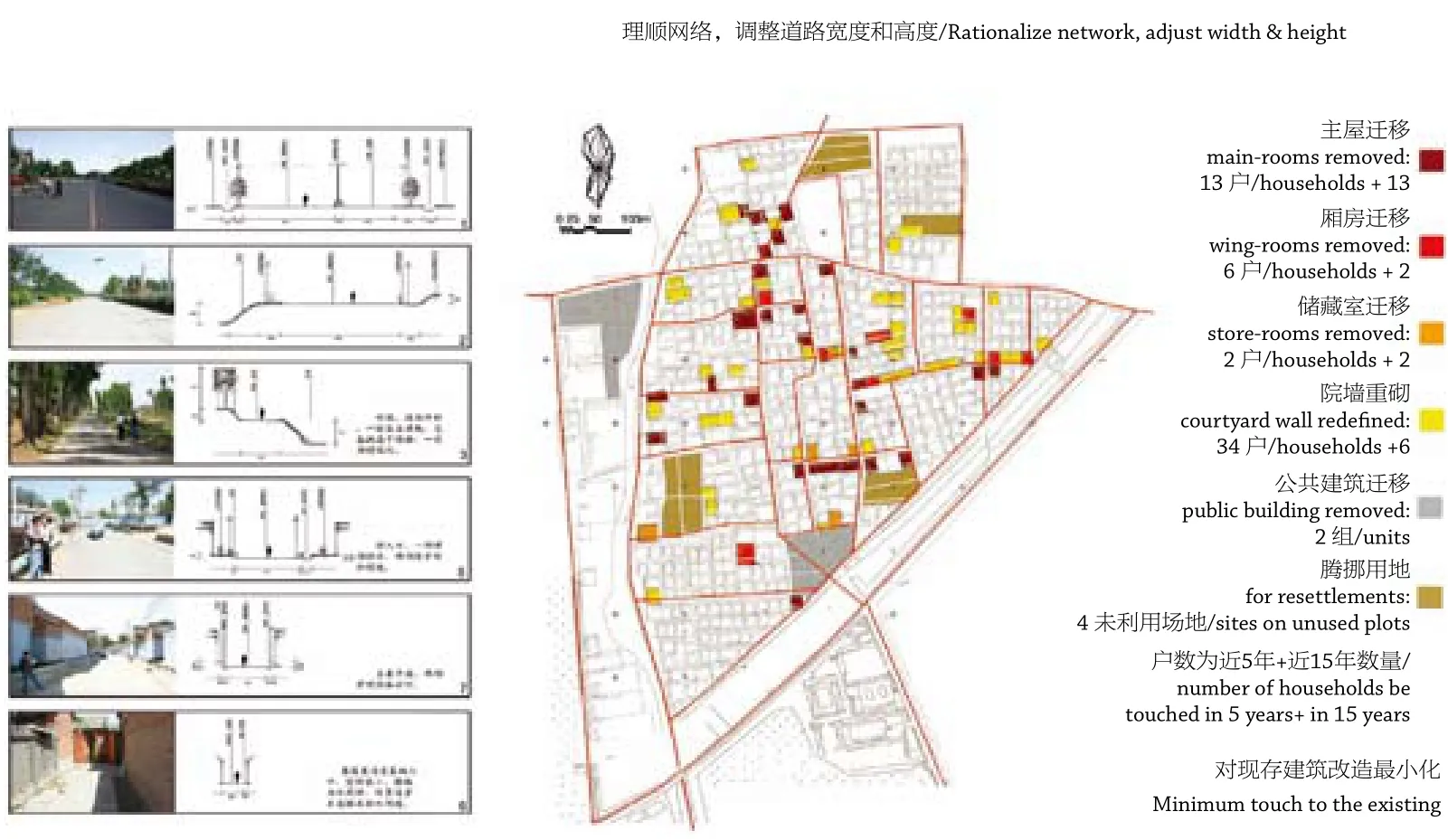
5 改善交通/Circulation improving
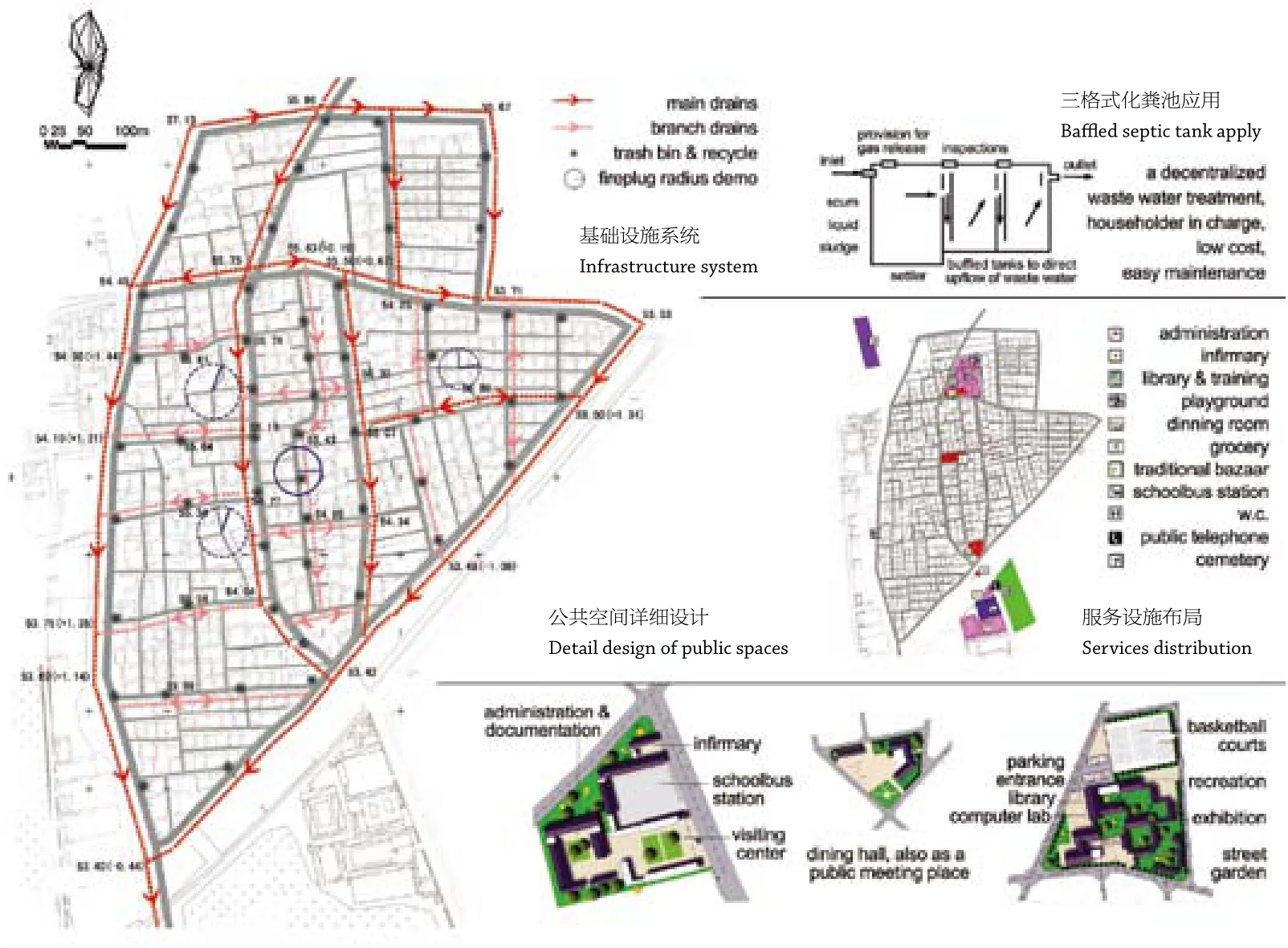
6 改善基础设施与公共服务/Infrastructure & public services improving

7 公共参与/Public participation
改革土地权益
2006年,中国在当时的五年计划中引入了一项新计划,旨在实现这两个目标。其中一项措施就是改进基础设施、教育和培训制度,以此促进农村发展。另一项具体针对可用土地流失的措施,就是农地租赁法规的部分自由化。将来,离开土地到城市的农民将有权直接将土地租给其他农民,或者将土地用于流转农业用途。该措施旨在预防出售共有土地用于不同用途——理论上,行政市仍是土地所有者,并承诺为任何希望耕种土地的农民保留耕地。
成群的调查研究人员
在中国,每个地区根据自身条件来灵活实施国家计划。在北京地区,由政府官员倪峰负责。2006年,他邀请建筑师和城市规划设计师张悦参与首都周边农村地区的研究,其预想是研究应如何实施该计划。“在清华大学时,我就认识了倪锋。”在顶级大学任教的张悦解释道。张悦立即被项目吸引住了——特别是因为直接与村民交往,包括逐户调查。“我喜欢调查工作。”35岁精力旺盛的张悦说道。张悦与团队一起编制了一个综合问卷。“我们坐公交车到村民家,向每个人询问他们的需要。”
对调查工作的积极回应
离城市距离不同的、规模各异的村庄被选用于研究。三人组调查人员向受访家庭询问其经济和社会条件——他们的需要和期望。一共在5个村庄访问了1000多户家庭。村民非常坦率,而且乐意提供诸如家庭收入之类的个人信息。“我们的大学有良好的声誉,”张悦说,研究人员因此很有信心。“理解了该项目和研究人员的热情后——村民对提供具体数据变得不那么拘谨。”
调查工作证实,该区域遇到的问题很大,而且有多面性。所有村民遇到的共同问题就是缺少基础设施以及年轻人外流到城市。“现在只有留守儿童和老年人。”卫生条件差也是一个重要问题。废水和污水处理系统差或者不存在,因而环境状况不乐观。
“早些年,废物直接处理,不用考虑什么。”他说。“30年前,这不是一个问题,因为废物主要是有机物。”将来可能面临的问题是电力供应和能源需求。在中国,冬天会比较寒冷;许多农村住所的隔热措施很差,窗户通常是用纸糊的。黑煤用来取暖——在这类条件下,这不是充分的能源来源。
大量有价值的措施
这项研究让张悦及其综合性团队与当局坐下来讨论为顺义区试点村开发一项具体的重建方案。这是离北京市中心东北45km的300户家庭约1000人口的小型社区。研究人员采访村民,还调查基础设施需求、建筑标准、公共空间的绿化、每户家庭的能源使用、现有道路体系和详细的人口数据。通过大量数据,创建了一个全面的数据库,因而可以
Te contrast between city and country is perhaps no more starkly presented than in China. Subsistence living conditions drive millions into the cities and farming land is converted to new uses. China, however, has realized the dangers of such continuing trends – which threaten societal make-up as well as future food security. A pilot urban planning strategy on Beijing's urban fringe demonstrates how much needs to be done to keep people in rural settings –and how much can be done.
In any context, when considering China, we are swamped by numbers – impressive, but increasingly matter-of-factual. Over the past 30 years the Chinese economy has grown, on average, by around ten percent per annum. In the same breath, one can call China both a developing country and an economic superpower.
A rural planning design for a suburban village on the outskirts of Beijing shows the power of combining heritage preservation, traditional knowledge, local materials, modern technology, and professional project management – and becomes all the more powerful when one considers the vast scale of China's rural sector.
One in ten global citizens is a Chinese farmer
Economic development is most pronounced in coastal regions, accounting for some 400 million of the country's population. However, rapidly improving life quality in such areas has generally passed China's other 900 million inhabitants by – those who live on, and off the land. Tis varies more markedly between regions, but particularly between city and country. A Chinese Academy of Social Sciences study confirms that China experiences the world's largest income divide between rural and city dwellers. Te contrast is especially stark when we stop to consider that one in ten global citizens is a Chinese farmer.
Mass migration – en masse!
Subsistence agriculture is still the norm in China – farming families provide for themselves and, at best, sell only a quarter of their yield. This equates to little disposable income, and few opportunities to invest in mechanization or other farm improvements. Somewhat different is the situation in the catchment areas of dense development centers – agriculture here was supported by the state. Yet, over the past 20 or so years, there has been a dramatic drop in rural real income with the result that people increasingly decided to leave the land for the cities on the coast.
There was work to be had – the building and services sectors especially – which in turn encouraged others to join the mass migration. Estimates suggest that between 1982 and 1990 around 200 million people from China's rural heartlands migrated to the cities. Te government expects that by 2010, another 180 million will have followed them.
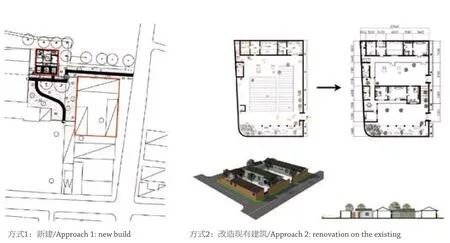
8 节地农宅设计/Land-saving housing design
Stemming the human tide
Those joining the rural exodus are aware they will have few rights in their new "homes", yet they feel compelled to still relocate to the cities. The Chinese Hukou system, as ancient as the land itself, deems residency is only valid in the place of one's family registration. Hence, migrants have limited rights to education or government services.
For years Chinese authorities have worked to improve the system but migration is unlikely to abate until the living conditions in rural areas improve. A program to develop long-neglected regions is progressing with this goal in mind – the government is committed to doubling the average income of a rural dweller by 2020; at present, this sits at around USD 600 per annum.
Dramatic loss of farming land
High priority is also accorded to land reform in China. Farming land is deemed the collective property of local municipalities – families lease acreage from their village committee for 30 years. However, the drift of peasants to the cities has resulted in many leases being relinquished – free plots become aggregated and sold for other uses. Moreover, they result in the dramatic loss of farming land – on which China's future food security depends.
Modeling undertaken by the Chinese Ministry of Agriculture states that the country needs around 120 million hectares of agriculturally-productive land in order to feed itself. Currently, 122 million hectares are still being worked but statistics indicating that a further loss of 200,000 hectares each year are alarming. Not least for the million or so farmers who eke out their existence on this limited space. An integrated solution is needed which addresses the range of incumbent causes and impacts.
Reforming land rights
A new initiative, introduced in 2006 as part of the current Chinese Five-Year-Plan, aims to achieve these twin objectives. Rural development is encouraged by improving infrastructure, education and training schemes, and other social services. A fur-ther measure, specifically targeting loss of arable land, is the partial liberalization of legislation regarding farm leases. In future, farmers who leave their land for the city will have the right to onlease directly to other farmers, or for alternate agricultural purposes. Tis aims to prevent the sale of common land for different uses – municipalities, still in theory the landholders, are committed to retaining land for cultivation at the disposal of any farmer who wishes to till the soil.
A busload of researchers
In China, each region and locality adapts state initiatives to their own conditions. In the area of Beijing itself, Government Officer NI Feng is responsible. In 2006, he invited architect and town planner, ZHANG Yue, to participate in studying the rural areas in the vicinity of the capital with a vision to how implementation of the initiative should occur. "I knew NI Feng from Tsinghua University in Beijing," ZHANG Yue explains, himself a lecturer at the leading university. ZHANG Yue was immediately attracted to the project – not least because of direct involvement with villagers, including door-to-door surveys. "I love research work," the energetic 35-year-old says. With his team, ZHANG Yue compiled an extensive questionnaire. "We took a bus to the villages and asked everyone about their needs."根据数据库在能想到的范围内设计一些改进方案。“我们想自己提一个问题:在有限预算的前提下,我们如何能既解决环境污染问题,又能提高这里的生活质量呢?”结果就是该团队研究出了大量有价值的措施。

9 住宅设计的环境因素/Contextual factors in housing design

10 农展设计的能源策略/Eco-strategies in housing design
新的总平面图划分了土地用途,为建筑开发设定了清晰的限制,注重保护自然环境,还包括了公共用途的区域。整个交通网也包含其中——该方案要求道路网能确保以后能到达任何公共建筑,例如诊所或消防队站点。基础设施的改进包括公园、花园、防洪排水系统、每家每户的分散式废水和垃圾收集设施的建设。特别重要的一方面就是按照一定的标准更新农宅建筑——在小面积地块上盖更多的房子。法律的目标是实现宅基地占用农用地每处不超过200m2,而不是300m2。
更好的家——更多的机会
为了更好利用少量土地,项目规划了两层房屋。这是改造方案的核心。“我们开发了一个原型,以此证明在较小面积宅基地上建造房屋也可以很有吸引力。”建筑师说。重要的考虑因素就是可负担性。“我们的研究表明,12,500美元是人们愿意支付的极限;他们将需要政府补贴。”在中国,建造一幢具有可持续性的房屋的合理标准为2500美元。
张悦的团队设计了一种确保家庭有机会进行个人选择的房屋。它考虑了传统知识和设计模式,结合了当地资源和现代技术。遗产保护也予以考虑。“设计中的可持续性原则包括太阳能、分散式厕所蹲坑、外部隔热、雨水收集等主动和被动使用。”最后,就和平时一样,最重要的难题就是成本;团队致力于尽可能将房屋成本控制在农民能承受的范围内。
省地的房屋设计考虑了变化的家庭需求,如果有计划下一代的话,房屋设计还可以分成两个单元。
接下来会发生什么——从城市逃离到乡村?
但张悦设计的原型不仅仅只关于成本。新的建筑设计还可以带来机会。最近几十年,中国城镇化进展迅速,因为现在人们渴望呼吸乡村的新鲜空气,也有想到不那么拥挤的地方简单地度假的需求。
“考虑到乡村旅游的可能性,我们设计房子时,可以将上面一层装修为客房。”他说。另外,还可以设置一个小型手工工作室作为收入来源。
新的建筑法也给我们提供了另一个视角。在北京,建造一个大规模的住宅事实上不太可能。张悦认为,在乡村建造一个较大的房子对城市居民来说是一个很有吸引力的选择。“但只有我们提供优质的基础设施,这个想法才能实现。”建筑师张悦也遇到了从这个理念中发现潜在商机的投资者。曾为2008年的原型由当地工匠建造,现在住了一户家庭,其本身也有利于该地区的就业。
“谨慎处理”
项目中涉及的措施很多,也许有人会问:不能简单地拆除旧的设施,重新建造新的?“不可能——这不是解决方案!”张悦强调。“我们没有意愿摧毁这个乡村的特征。”因而,项目是以循序渐进的、友好的方式实施的。改造项目首先是以废弃场所为重点;一个家庭由另一个家庭替代。逐步地,村里的一个球场被改造,但是以一种简洁的方式。重点是保持社会凝聚力不受影响。
“谁还想住在原来老房子的,是可以的。”这就是承诺。没有人被迫接受革新。“但是我相信——我们的理念提供了这么多优势,大部分人不会拒绝改变。”为了发展新的道路系统,有些房屋需要被拆除——虽然在这种情况下张悦还是向村民承诺:“如果不想搬的,我们简单地规划其他路径!”那天最后,目的就是让村民在为了提高生活质量——就单独为这个原因,让各住户自己决定自己的将来非常重要。
即有可能成为典范的理念
因为村庄的社会发展是规划结构工作的一部分,反过来,该社区包含在有关重建方案的所有决策中。工作开展是透明的,反馈意见也会得以考虑。村民定期获得关于计划的信息,并被鼓励在小组讨论中发表他们自己的看法。“我们经常提出要解决的问题——例如,许多老年人在阅读和理解计划上存在困难,”张悦说。“我们必须寻找新的沟通方式。”
然而,政府保证的物质支持只持续到2010年,该项目的将来具有不确定性。但张悦有信心,认为各项工作在这之后将继续下去——中国致力于农村的发展。该项目的理念很有可能成为全球经历快速变革的乡村和城区的可持续发展的典范。张悦相信:“我们需要保留我们仍拥有的东西。”
Confident response to field work
Intense preparation prefaced the arrival of the researchers. Villages chosen for the study were of varying size and distance from the city. Families were visited by three-person teams to enquire about their eco-nomic and social conditions – their needs as well as expectations. More than a thousand interviews across five villages took place. Te communities were very open, also with personal information such as household income. "Our university has a good reputation," ZHANG Yue says, explaining the confi-dence with which the researchers were received. "With an understanding of the project and the enthusiasm of the researches – the villagers became less inhibited about providing concrete data."
The field work confirmed that problems confronting the region were substantial and multidimensional. Common to all villages was their insufficient infrastructure, and the loss of young people to the cities, ZHANG Yue explains. "Now only children and the elderly remain." Adequate sanitation is a central problem. With poor or nonexistent wastewater and sewage treatment systems, the environmental situation is troubling.
"Earlier, waste was simply disposed without thought," he says. "Thirty years ago this was not a problem, because waste was mainly organic." A further challenge is presented by power supply and energy needs. Winters can be bitter in China; many rural dwellings are poorly insulated and windows often sealed only with paper. Black coal is used for heating –an inefficient energy source in such conditions.
A treasure trove of measures
The research enabled ZHANG Yue and his multidisciplinary team to sit with local authorities and develop a concrete renewal strategy for a pilot village in the Shunyi district. This small community of some 1000 inhabitants across 300 families lies 45 kilo-meters northeast of Beijing's city centre. Te schedule of village interviews was supplemented by research into infrastructure needs, building standards, greening of public spaces, energy use per house, existing road systems and detailed demographic data. From this mass of information, a comprehensive database was created from which improvements could be planned on all conceivable levels. "We put a question to ourselves: How can we improve life quality here while addressing environmental pollution, all on a limited budget?" ZHANG Yue enthuses. A treasure trove of measures was the result.
The new master plan classifies land use, sets clear limits to building development, protects natural resources, and includes zones for public use. The entire transport network is implicated – the strategy calls for a network of roads to ensure that in future any public building is accessible, whether it be an outpatient clinic or the fire-brigade depot. Infrastructure improvements include the development of parks and gardens, drainage systems to protect against flooding, and decentralized sewage and garbage collection for each household. A particularly important aspect is the revised building code – more houses are planned on less land. Instead of 300 square meter allotments, the law aims for 200.
Better homes – more opportunities
To make better use of less land, two-storey houses are planned. These are at the heart of the renewal strategy. "We developed a prototype to demonstrate that building on smaller allotments could also be attractive", the architect says. An important consideration was also affordability. "Our research showed that USD 12,500 is the limit people would like to pay; government subsidies will be needed." In China a sustainable house can be constructed to a reasonable standard for USD 25,000.
ZHANG Yue's team designed a home which still ensures families have opportunities for personal choice. It takes account of traditional knowledge and design patterns, combines local materials and modern technologies. Heritage preservation is taken into account. "The sustainability principles in the design include active and passive use of solar energy, decentralized sanitation pits, exterior insulation, rainwater collection, and so on. It is integrated, yet has an optional menu for families to also choose what suits them best." At the end, as ever, the crucial challenge is one of cost; the team was committed to making the house as afford-able as possible.
The land-saving housing design takes account of changing family needs, and can even be divided into two units, if a new generation is planned.
What next – a city to country exodus?
Yet ZHANG Yue's prototype is not just about cost. There are also opportunities to be had with this new building design. China's urbanization has grown so remarkably in recent decades that there is now a yearning for country air, a demand, therefore, for brief holidays to less densely-packed regions.
"With rural tourism a possibility, we designed the house in such a way that the upper floor could be furnished as guest rooms." he says. Alternatively, a small handi-craft studio could be set up as a source of income.
Another perspective is that offered by the new building code. In Beijing, building a sizeable home is virtually impossible. ZHANG Yue believes that relocating to a village could be an appealing option for urban residents who want larger homes. "But this will only happen if we can offer good infrastructure." Te architect has already met with investors who see the commercial potential in his concept. What was once the prototype of 2008 now houses a family, built by local artisans which, in itself, pro-vides for security of employment in the area.
"Handle with care"
The measures involved in the project are so numerous that one could ask: Wouldn't it be simpler to demolish the old and start over afresh? "Impossible – that is no solution!" ZHANG Yue is emphatic. "We have no desire to destroy the character of this village." As a result, implementation is gradual, stepby-sympathetic-step. The renewal project is first concentrated on abandoned locations; one household is replaced by another. Gradually a village quarter is revitalized, but in a more compact way. Te emphasis is on keeping social cohesion intact.
"Whoever wishes to remain in their old house, may," is the promise. Nobody is forced to accept innovation. "But I am convinced – our concept offers so many advantages that most people do not resist change." To develop the new road system, some houses would need to be demolished –nevertheless in these cases ZHANG Yue is also open to compromise: "If people do not wish to move, we will simply plan the road differently!" At the end of the day, the purpose is to keep villagers in their community, and with improved life quality – for this reason alone, it is important for individual householders to decide their own future.
Concept with high potential to be role model
Because the village's social development is integral to the planned structural works, and vice-versa, the community is included in all decision-making regarding the renewal strategy. Transparency is a given, feedback taken into account. Villagers are regularly informed about plans and encouraged to offer their opinions in group discussions. "We are always presented with issues to solve – for example, many older people have difficulty reading or understanding the plans," ZHANG Yue says. "We must find new ways of communication." A new prototype is planned in order to refine the housing concept.
However with provisional government support assured only until 2010, the project's future is uncertain. ZHANG Yue is confident, though, that things will proceed beyond this date – China is committed to the development of its rural areas. And the concept has high potential to be a role model for sustainable development in rural communities and urban districts experiencing rapid change in emerging economies across the world. "We need to preserve what we still have," ZHANG Yue believes.
